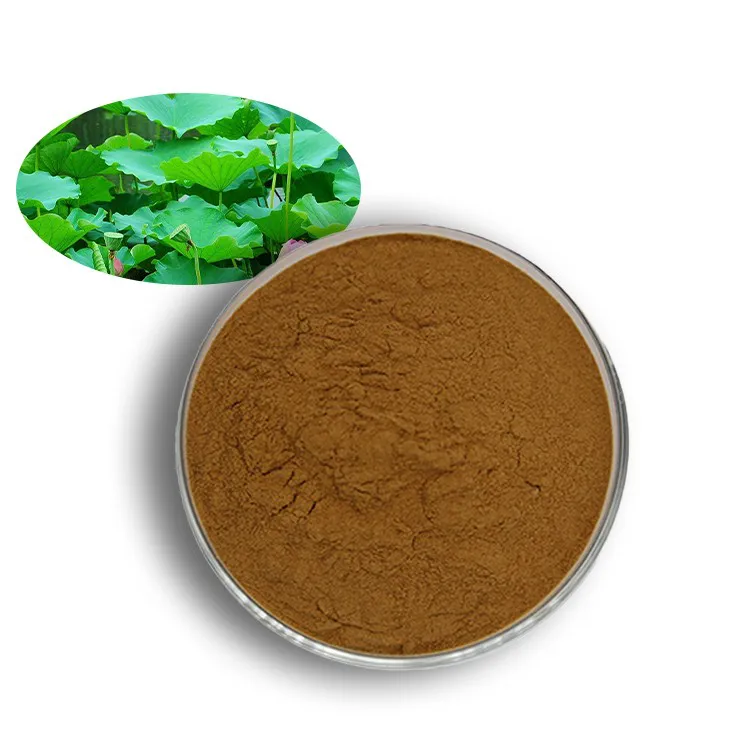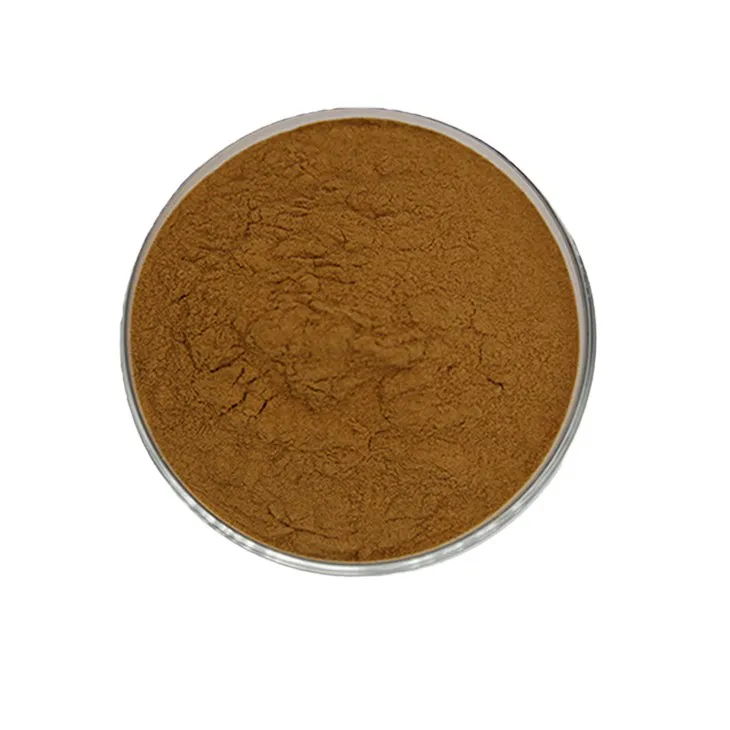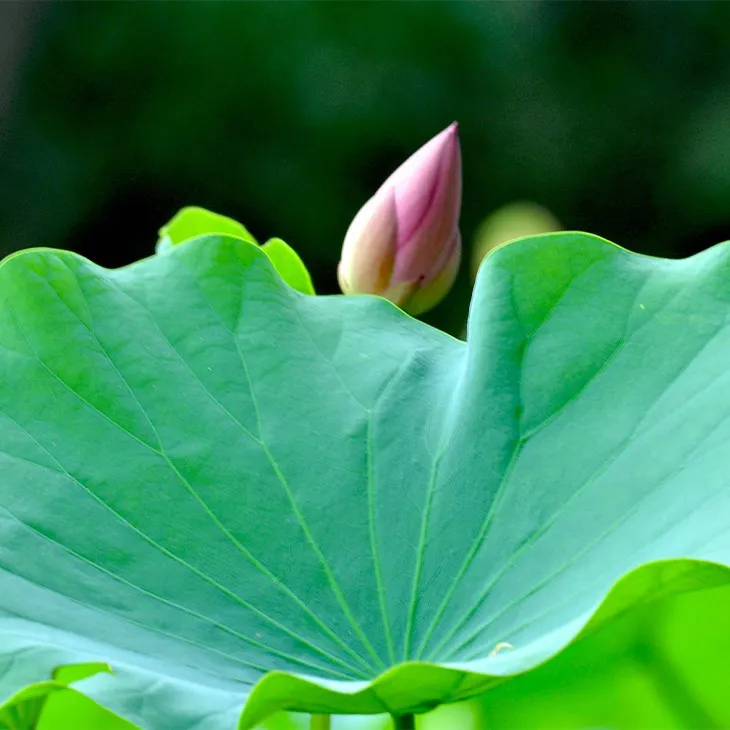- 0086-571-85302990
- sales@greenskybio.com
Organic Supercritical CO2 Extraction of Lotus Leaf Extract.
2024-11-27

Introduction
The extraction of Lotus leaf extract using organic supercritical CO2 technology has emerged as an area of great significance in both research and practical applications. Supercritical CO2 is a remarkable solvent with several unique properties. It is non - toxic and non - flammable, which makes it a far safer option compared to many traditional solvents when it comes to extracting valuable components from lotus leaves.
In its supercritical state, CO2 exhibits characteristics of both gases and liquids. This dual - nature enables it to penetrate the plant material of lotus leaves with relative ease and dissolve the desired substances effectively. The process of supercritical CO2 extraction holds great promise for obtaining high - quality Lotus leaf extracts.

Factors Affecting the Extraction Process
Pressure
Pressure is one of the most crucial factors in the supercritical CO2 extraction of Lotus leaf extract. When the pressure is adjusted, it has a direct impact on the density of the supercritical CO2. As the pressure increases, the density of supercritical CO2 also rises. This change in density affects the solubility of the components within the lotus leaves.
For instance, at lower pressures, only certain less - polar components may be dissolved. However, as the pressure is increased to an optimal level, a wider range of bioactive compounds can be dissolved and extracted. If the pressure is too high, it may lead to the extraction of unwanted substances or may even cause damage to the bioactive compounds themselves.
Temperature
Temperature also plays a significant role in the extraction process. Just like pressure, it affects the properties of supercritical CO2. An increase in temperature can enhance the diffusivity of CO2, allowing it to move more freely within the lotus leaf material. However, a very high temperature may also cause the degradation of some heat - sensitive bioactive compounds present in the lotus leaves.
On the other hand, at lower temperatures, the extraction efficiency may be relatively low as the solubility of the components in supercritical CO2 may be reduced. Therefore, finding the right balance of temperature is essential for obtaining a lotus leaf extract rich in desired bioactive compounds.

Optimization of the Extraction Process
To optimize the extraction of lotus leaf extract using supercritical CO2, researchers need to carefully consider and control both pressure and temperature. By conducting a series of experiments, they can determine the optimal pressure - temperature combination for a particular set of desired bioactive compounds.
For example, in some studies, it has been found that a pressure range of [X] - [Y] bar and a temperature range of [A] - [B] °C can result in the extraction of a high proportion of antioxidant - rich compounds from lotus leaves. This optimization not only improves the extraction efficiency but also ensures the quality and potency of the final extract.
Moreover, the extraction time also needs to be considered as part of the optimization process. Longer extraction times may lead to higher yields, but it may also increase the extraction of unwanted substances. Shorter extraction times may not fully extract all the desired compounds. Therefore, finding the right extraction time in relation to the pressure and temperature conditions is crucial.

Bioactive Compounds in Lotus Leaf Extract
Lotus leaf extract obtained through supercritical CO2 extraction contains a variety of bioactive compounds. These compounds are responsible for the potential applications of the extract in different fields.
- Flavonoids: Flavonoids are one of the major bioactive components in lotus leaf extract. They possess strong antioxidant properties. These compounds can scavenge free radicals in the body, which are often associated with various diseases such as cancer, heart disease, and neurodegenerative disorders. In the context of skincare, flavonoids can help protect the skin from oxidative damage caused by environmental factors such as UV radiation and pollution.
- Alkaloids: Alkaloids present in lotus leaf extract may have pharmacological effects. Some alkaloids have been studied for their potential anti - inflammatory properties. They can interact with the body's immune system and help reduce inflammation. In the field of medicine, this could be beneficial for treating inflammatory diseases such as arthritis.
- Triterpenoids: Triterpenoids are another group of important bioactive compounds. They have been shown to have anti - microbial properties. This means that lotus leaf extract containing triterpenoids may have applications in the development of new antibiotics or in the treatment of microbial infections.

Potential Applications in the Medical Field
The lotus leaf extract obtained through supercritical CO2 extraction has significant potential in the medical field.
- Treatment of Oxidative Stress - related Diseases: As mentioned earlier, the presence of flavonoids and other antioxidant compounds in the extract makes it a promising candidate for treating diseases related to oxidative stress. Oxidative stress is involved in many chronic diseases such as diabetes, atherosclerosis, and certain types of cancer. The antioxidant properties of the lotus leaf extract can help neutralize the excessive free radicals in the body, thereby reducing the oxidative damage to cells and tissues.
- Anti - inflammatory Therapies: The alkaloids and other anti - inflammatory components in the lotus leaf extract can be explored for the development of new anti - inflammatory drugs. Inflammatory conditions such as rheumatoid arthritis, inflammatory bowel disease, and asthma are characterized by an overactive immune response. The lotus leaf extract may help modulate this immune response and reduce inflammation.
- Microbial Infections: The triterpenoids with anti - microbial properties in the lotus leaf extract could be used to develop new treatments for microbial infections. With the increasing problem of antibiotic resistance, the search for new antimicrobial agents is of great importance. Lotus leaf extract may offer a natural alternative or a source of inspiration for the development of novel antimicrobial drugs.
Applications in the Beauty Industry
The lotus leaf extract also has wide - ranging applications in the beauty industry.
- Anti - aging Products: The antioxidant properties of the extract, mainly due to the presence of flavonoids, make it an ideal ingredient for anti - aging skincare products. Free radicals are known to accelerate the aging process by damaging skin cells and collagen. By incorporating lotus leaf extract into skincare products such as creams, serums, and masks, it can help protect the skin from free - radical damage and maintain its youthful appearance.
- Skin Whitening and Brightening: Some compounds in the lotus leaf extract may have skin - whitening effects. They can inhibit the production of melanin in the skin, which is responsible for skin pigmentation. This makes lotus leaf extract a potential ingredient for skin whitening and brightening products, especially in markets where fair skin is highly desired.
- Skin Soothing and Repair: The anti - inflammatory properties of the extract can be beneficial for soothing irritated skin. It can be used in products for treating sunburned skin, sensitive skin, or skin with eczema or other inflammatory conditions. Additionally, it may also help in the repair of damaged skin cells.
Conclusion
In conclusion, the organic supercritical CO2 extraction of lotus leaf extract is a highly promising area. The unique properties of supercritical CO2 as a solvent, along with the careful control of factors such as pressure, temperature, and extraction time, can lead to the production of high - quality lotus leaf extracts rich in bioactive compounds.
These extracts have the potential to make significant contributions in both the medical and beauty industries, among others. However, further research is still needed to fully explore the potential of lotus leaf extract, optimize the extraction process, and develop more effective products based on this natural resource.
FAQ:
What are the advantages of using supercritical CO2 for lotus leaf extract extraction?
Supercritical CO2 is non - toxic and non - flammable, which provides a safe solvent alternative. In the supercritical state, it has the characteristics of both gas and liquid, allowing it to effectively penetrate plant material and dissolve the desired substances from lotus leaves.
How do pressure and temperature affect the extraction of lotus leaf extract using supercritical CO2?
Pressure and temperature are key parameters. They can significantly influence the extraction efficiency and the composition of the final extract. By precisely controlling these parameters, researchers can optimize the extraction to obtain lotus leaf extracts rich in bioactive compounds.
What bioactive compounds can be obtained from lotus leaf extract using supercritical CO2 extraction?
The extraction can yield bioactive compounds. However, the specific compounds may vary depending on the extraction conditions. Generally, these compounds may have antioxidant, anti - inflammatory and other properties, which are potentially useful in medicine and the beauty industry.
What are the potential applications of lotus leaf extract obtained by supercritical CO2 extraction in the medicine field?
In the medicine field, it may be used to develop new drugs for treating diseases related to oxidative stress and inflammation. The bioactive compounds in the lotus leaf extract may have beneficial effects on these health issues.
How can lotus leaf extract obtained by supercritical CO2 extraction be used in the beauty industry?
In the beauty industry, it can be incorporated into skincare products. Due to its antioxidant and anti - aging effects, it may help improve skin conditions and delay the aging process.
Related literature
- Supercritical Fluid Extraction of Bioactive Compounds from Plants"
- "Advances in Supercritical CO2 Extraction Technology for Herbal Extracts"
- "The Role of Supercritical CO2 in Extracting Medicinal Compounds from Natural Sources"
- ▶ Hesperidin
- ▶ Citrus Bioflavonoids
- ▶ Plant Extract
- ▶ lycopene
- ▶ Diosmin
- ▶ Grape seed extract
- ▶ Sea buckthorn Juice Powder
- ▶ Fruit Juice Powder
- ▶ Hops Extract
- ▶ Artichoke Extract
- ▶ Mushroom extract
- ▶ Astaxanthin
- ▶ Green Tea Extract
- ▶ Curcumin
- ▶ Horse Chestnut Extract
- ▶ Other Product
- ▶ Boswellia Serrata Extract
- ▶ Resveratrol
- ▶ Marigold Extract
- ▶ Grape Leaf Extract
- ▶ New Product
- ▶ Aminolevulinic acid
- ▶ Cranberry Extract
- ▶ Red Yeast Rice
- ▶ Red Wine Extract
-
Pomegranate Extract
2024-11-27
-
Angelica sinensis extract
2024-11-27
-
Nettle Root Extract
2024-11-27
-
Centella Asiatica Extract
2024-11-27
-
Citrus bioflavonoids
2024-11-27
-
Mulberry Extract
2024-11-27
-
Kupilu Extract
2024-11-27
-
Elderberry Extract
2024-11-27
-
Selenium yeast
2024-11-27
-
Alfalfa Meal
2024-11-27





















